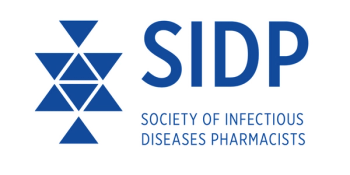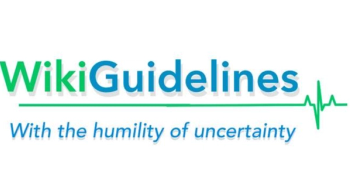
PBPs are more than static β lactam targets. Host conditions rewire PBP activity and peptidoglycan architecture, shaping tolerance, resistance, and how we design salvage regimens.

PBPs are more than static β lactam targets. Host conditions rewire PBP activity and peptidoglycan architecture, shaping tolerance, resistance, and how we design salvage regimens.

In the midst of many changes surrounding aminoglycosides over the past several years, clinicians may be left wondering if these agents still have a role in modern clinical practice. This article summarizes changes impacting aminoglycosides, discusses where these agents may still have a role in the context of gram-negative infections, and explores future areas of study.

Climate-driven changes and other drivers of the expanding geographic range of Ixodes ticks and Lyme disease are explored.

WikiGuidelines produces novel clinical practice guidelines developed with pragmatic, applicable methodology, including a diverse author group.

The latest Bench to Bedside column reviews new guidance on the treatment of drug-susceptible and drug-resistance Mycobacterium tuberculosis infections.

Intravenous (IV) push is an attractive option to administer antimicrobial therapy to patients in an efficient and effective manner in a variety of clinical settings. While many advantages to IV push administration exist, clinicians should be mindful of available literature regarding safety profiles, pharmacokinetic/pharmacodynamic characteristics, and clinical data for IV push antimicrobial administration prior to utilizing it in specific patient populations.

Obesity significantly impacts the pharmacokinetics (PK) of antifungal drugs like echinocandins, including volume of distribution (Vd) and clearance. However, despite these PK differences, current clinical evidence generally does not support the need for universal dose adjustments in obese patients. Clinicians should consider personalized dosing based on patient characteristics, infection severity, and specific drug properties due to echinocandins' favorable safety profiles.

In the third installment of our series on injectables, long-acting injectables offer new treatment and prevention options for HIV, especially benefiting patients who struggle with daily oral medications.

In the second installment of a 3-part series on long-acting injectables related to various infections, Caitlin Soto, PharmD, BCIDP, provides insights on using rezafungin for invasive candidiasis.

Long-acting lipoglycopeptides (LGPs) like dalbavancin, oritavancin, and telavancin were developed with extended half-lives, initially targeting acute bacterial skin and skin structure infections (ABSSSIs). However, recent studies have explored their potential in treating other infections, including infective endocarditis (IE), bone and joint infections (BJIs), and bloodstream infections (BSIs), offering an alternative to standard care and outpatient antimicrobial therapy.

In the latest Bench to Bedside column, clinicians provide information and resources on recommended topics learners should explore.

PEN-FAST is a validated risk stratification tool that promotes efficient, safe, and effective de-labeling of penicillin allergies.

Management of this condition has been associated with antibiotic misuse. In the latest Bench to Bedside column, clinicians offer insights on therapy indications and what the latest literature reports on the condition.

Emerging treatment options for patients with persistently positive blood cultures with Methicillin-Susceptible Staphylococcus aureus (MSSA).

Two RSV vaccines for seniors were FDA approved this year and here is an overview of the vaccines and the study data.

In the latest Bench to Bedside column, 2 clinicians discuss the benefits of utilizing social media for learning.

This time of year means new trainees will begin their careers and are excited to take on research projects. However, they may have limited to no experience in this area. Here is an opportunity to give them structure and guidance when committing to longitudinal trainee research.

Outpatient parenteral antimicrobial therapy (OPAT) offers benefits for patients as well as providing cost effectiveness; however, it is not without its challenges. Two clinicians provide insights on this modality.

Clinicians look at optimal approaches for trying to avoid Clostridioides difficile infection (CDI).

In the latest SIDP column, two clinicians provide information on recent studies and guidelines directed at antibiotic durations in this patient population.

Emerging literature suggests therapeutic drug monitoring for this antimicrobial to minimize the risk for linezolid-associated toxicities while maintaining efficacy in select populations.

In the latest column from the Society of Infectious Diseases Pharmacists (SIDP), here is a discussion on the use of rifampin as an adjunctive antibiotic treatment for patients with diabetic foot osteomyelitis.

Access to antifungal susceptibility testing (AFST) remains limited in the United States. Therefore, providers must recognize clinical situations where AFST will provide its greatest value. In the latest article from SIDP, infectious disease pharmacists offers some insights on this subject.

In the latest column from SIDP, clinicians discuss that along with the once-daily dosing for many indications, there are also compelling indications for twice-daily dosing.

In the latest column from SIDP, handshake stewardship prioritizes face-to-face communication between frontline providers to enable feedback to assess the appropriateness of prescribed antimicrobials.

In the latest column from SIDP, the authors discuss having leaders to help navigate school and beyond.

In the latest article from SIDP, here is a look at the use of various intravenous (IV) antimicrobial therapies to address infections in these patients.

In the latest article from SIDP, here is a look at therapy options addressing this emerging clinical challenge.

The latest article from SIDP offers a Top 5 list of how to precept a learner on an infectious disease rotation.

The latest article from SIDP illustrates the challenges of area under the curve (AUC) implementation and offers insights for strategies and resources to overcome them.